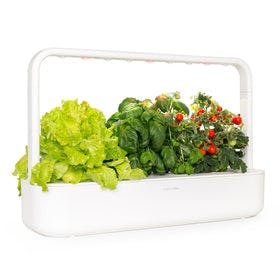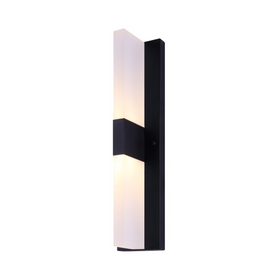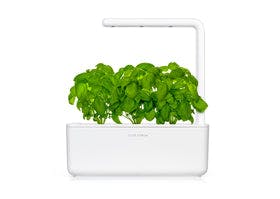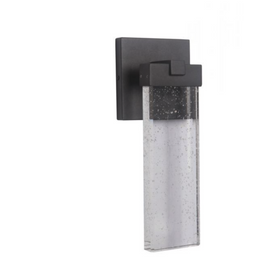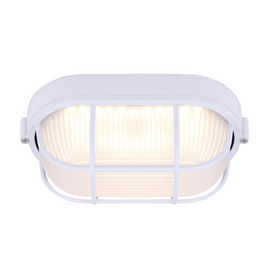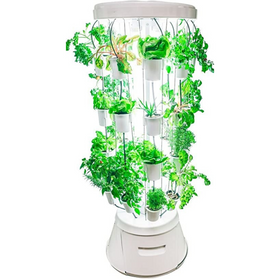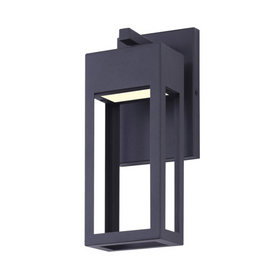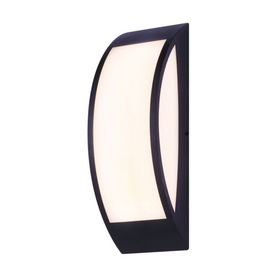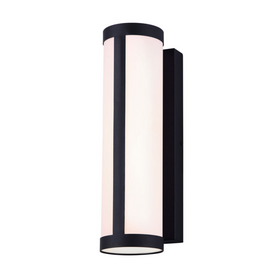
Vertical Gardening at Home: What You Need To Know
Last Updated: Mar 28, 2025You don't need a hundred square feet to grow a successful garden. Sometimes, all it takes are some pots, and trellises and you are growing tomato plants as tall as you are. With vertical gardening, you can produce towering food crops or walls of herbs, all on a much smaller footprint than traditional gardening.
Table of Contents
- What is Vertical Gardening?
- Why Garden Vertically?
- What Are Some Vertical Gardening Styles?
- What Plants Are Best for Vertical Gardening?
- What Are the Best Herbs for Vertical Gardening?
- What Are the Best Flowers for Vertical Gardening?
- What Are the Best Vegetables for Vertical Gardening?
What is Vertical Gardening?
Vertical gardening is the art of growing upward and not outward. In recent years, this strategy has become increasingly popular for weekend gardeners and professional farmers alike. But why is that?
There are two vertical gardening styles: growing plants in containers attached to vertical frames or wall surfaces; and training a plant to grow vertically. Both of these growing styles take plants off the ground and allow their foliage to expand three-dimensionally.
Now, vertical gardens do come with some challenges. They often take extra time to train the plants to climb a certain way, but the fact that you can grow this way indoors or out makes up for the additional required attention.
Vertical gardens are an excellent option for homes where space is limited, properties looking to create living fences, and even walls inside a home or business.

Why Garden Vertically?
Why select gardening this way over others? Aside from being beneficial to diversify your gardening strategies, sometimes the best solutions involve mixing and matching various options. But if I had to select a few reasons to consider adding vertical crops to a garden this year, they would be: save your back, save your money, and save the planet.

Save Your Back
One benefit to growing a vertical garden is that as your plants grow, you save yourself a lot of strain during the year's harvesting portion. Being a tall person, I dread kneeling to the ground to cut at my kale and the countless afternoons spent hunched over a cherry tomato bush to get at those hidden delights.
Growing your plants vertically allows you to spend more time tending the garden and less time stretching.
That said, don't outgrow yourself! Your plants won't stop growing just because they've made it to the extent of your reach. And if you can't reach your crop, you can't harvest it easily. Gardening can be a calming way to spend your day, but it can become a full-contact sport if you're not prepared. Train your plants so they produce crops within a comfortable range for you to harvest. And if they are beginning to become unruly, sometimes a single snip can tell a plant to stop moving in a specific direction.
Save Your Money
Vertically grown plants experience various benefits that can improve plant health. In the Farmer's Almanac, the editors touch on one of the benefits of vertical gardening: the improved air circulation your plants experience. Having improved airflow through the plant means that moisture-loving fungi have a more challenging time attacking your leaves. Also, having the foliage and the fruits lifted off the ground reduces your plants' chance of picking up a soil-borne disease.
Reducing the chance of fungi and diseases attacking your plants saves you from needing to spend money on replacements.
With plants trained to climb vertically, the leaves also experience less competition than they would on the ground, surrounded by neighbors. This additional leaf space gives the plant more potential to photosynthesize, increasing the energy it can dedicate towards fruiting. And with your backdrop full of vertical plants, you can also add lower-layer varieties to create a fully productive space. Taking advantage of these greater yield potentials from layering your crops saves you money at the grocery store. Imagine having a wall of snacks just outside your door, or maybe in the next room!
Being able to grow a vertical garden indoors also carries unique benefits. With proper lighting, you could grow herbs and vegetables year-round indoors.
Each crop you grow at home is a few dollars you save at the grocery store and in the gas, you spend to get there. Add in saving your seeds to produce the next crop, and you begin accumulating savings.
Save the Planet
Vertical gardening makes it possible to garden in areas where one may have previously thought impossible. By using your wall space, you are adding food crops where there weren't any. Whether you are growing salad greens and herbs in small containers or grapes over your pergola—each crop you harvest from home is one that didn't have to travel from farm to store.
On top of reducing the food you have to bring in, you gain the added benefit of the compost you generate with your homegrown plants. That compost eventually makes its way back into your plants instead of filling a landfill.
And More
But don't let the list stop there! There are plenty of reasons to create a vertical garden, from making full use of your space to creating a microclimate around your patio. Are you looking for a little more inspiration? Anne Gibson over at the Micro Gardener has a list of twelve reasons to grow vertical!
And if you're still not sure, consider the amazing things done with modern vertical farming. Vertical farming has become growingly popular in the last decade. With the world population estimated to surpass 9 billion by 2050, and agriculturally arable land to significantly diminish by that same time, agricultural startups are starting to look to vertical farming. With a 400x greater yield per acre grown and a 70-95% reduction in water used, farming never looked so sustainable.
But why let the big farms have all the fun when developing these excellent vertical crops at a home scale.
What Are Some Vertical Gardening Styles?
Part of the fun of vertical gardening is the numerous styles you have to choose from, ranging from traditional to upcycled. But before we look at what you can grow your plants in, here are a few things to consider:
When growing on a balcony or patio, the planter's size will determine what plant you decide to grow. Always plan for your containers to hold the adult size of your plant when selecting. And remember, small planters will require more frequent watering.
If you plan on suspending containers from a wall, remember to consider the plant's total weight, including the planter's saturated soil. A dozen dry pots aren't heavy, but the minute you water them in, you're adding just over eight pounds of weight per gallon.
When selecting your growing site, consider your sun angles for light and heat. The benefit of growing against a wall is that heat absorbed by the surface will slowly radiate back to the plants over the evening. This ambient heat can be beneficial later in the season as the cool fall evenings begin to slow plant growth. It would also be worthwhile to examine any overhangs casting rain shadows on your plants. The last thing you want is to think a storm watered your garden only to find them bone dry the next day.
When choosing your plant's support system, be sure to choose something that will support the mature plant's weight. Plants, like beans and peas, do best with climbing trellises that they can overwhelm. Your perennial grapevines, on the other hand, will need a sturdier structure for support. If you're planning on growing against a wooden frame, be sure to add extra layers of protection against humidity. This protection is because, over time, the wood will become saturated and decay.
Some sites recommend layering the surface with plastic covering and jute, giving the area a clean appearance and giving the plants something to grip. The downside is, if done improperly, you run the risk of trapping moisture in with the wood and running into the same issue.
That said, these are my 5 of my favorite vertical garden ideas:

Trellises
Trellises are the most common vertical growing option and are easily found at a local garden shop or made at home. These frames are an excellent option for a variety of climbing plants.
If your plants are in a container, be sure that it is balanced. Too much weight to any side and gravity will bring your crop back to the ground.

Tripods
Tripods are great for spaces away from walls and preferably in a yard where the whole area gets sunlight. Planting beans around each pole and allowing them to climb is one way to take advantage of the tripod design. By adding in connecting strings between each leg, you can train your crop around the support, creating a small enclosure. I've seen tripods large enough for children to sit comfortably in while they excitedly harvested the beans!

Upcycled
In the realm of vertical gardens, upcycled seems to be taking off. From reused canvas shoe organizers to bisected 2-liter bottles and even gutters, it can be a planter if it can hold a crop. Of course, when upcycling, always be sure to research the products you are using to ensure they are non-toxic.
In a world with plenty of trellises at the store, an upcycled garden may catch the praise of a passerby or create the inviting aesthetic you were hoping to achieve for your guests.
Tower Gardens
These gardens can be DIY or purchased and are, as the name implies, a tower of plants. These come in many forms, from a pyramid style to a vertical cylinder. When space permits, you can build a pyramid of planter boxes that can hold your strawberries, creating a delicious conversation starter.

Hanging
Whether they are hanging against the wall or under the awning, hanging baskets fill a vertical niche. These dangling delights can be full of pollinators, attracting various beneficial insects to your space. Or they can carry hanging fruits and vegetables like strawberries and cherry tomatoes. Be sure to consider sun and wind exposure with these containers as too much may dry them out quickly.

What Plants Are Best for Vertical Gardening?
So what plants are going to be good options for a vertical garden?
- If you're new to the process, look for vining, rambling, and sprawling plants with flexible stems. Woody branched perennials are possible to train but are a bit more complicated.
- Suppose you're designing a vertical garden in your backyard. In that case, you have opportunities to grow fruiting trees in various ways against the fence, like single cordon, espalier, and fan.
- Raspberries and blackberries also make an excellent addition for vertical gardening, creating both a delicious treat and an intimidating boundary to a property. Or, for a pop of color, consider climbing roses.
- With adequate support, you can grow heavier melons and squash vertically. Consider growing squash over a garden trellis archway, pulling the tender squash through the openings when they were young to protect them from the sun.
- If you're working with a balcony or patio garden, have no fear, vertical gardening has plenty of options. For the gardener limited to only a wall of small containers, it can be challenging to find what to grow. I'd recommend shallow-rooted vegetables or herbs that you harvest frequently. By keeping seedlings ready, you can quickly swap out one crop for the next.

What Are the Best Herbs for Vertical Gardening?
Herbs are an excellent option for vertical gardening. Basil, mint, parsley, chives and thyme are the five easiest herbs to grow in a vertical garden.

What Are the Best Vegetables for Vertical Gardening?
Growing vegetables vertically requires a little extra training in comparison to flowers and herbs. Always be sure to monitor your plants and feed them regularly. Beans, cucumbers, peas, tomatoes and squash are five great climbing vegetables to consider.
As with everything in gardening, your garden may require research to succeed in your site's unique conditions. And that's okay! Everything takes time, and learning what plants will work best for your property is just one step in the fun journey of gardening. But before long, you'll be enjoying your wall of herbs and hanging baskets of tomatoes.
Tanner Sagouspe
Tanner Sagouspe has a Masters in Environmental Management and is a Permaculture Designer who promotes tackling the climate crisis at home.



